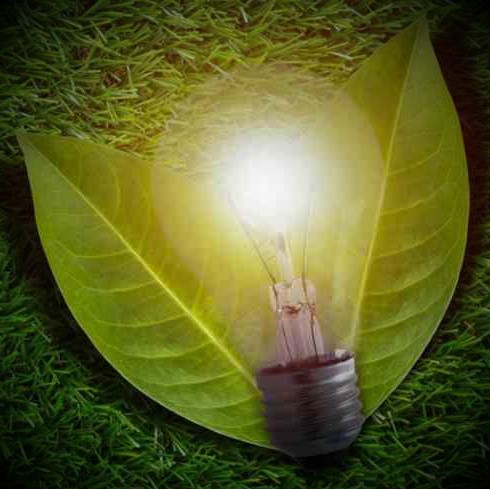
World clean energy investment totalled $333.5bn, up 3% from 2016 and the second highest annual figure ever, taking cumulative investment since 2010 to $2.5tn.
This is according to a new report published by Bloomberg New Energy Finance (BNEF) this month.
China was highlighted as the leader in solar photovoltaic (PV) installations in 2017, taking over big strides made in clean in investment in Australia and Mexico, and declines in Japan, the UK and Germany.
Clean energy installations: Solar PV
Annual figures from BNEF, based on its world-leading database of projects and deals, show that global investment in renewable energy and energy-smart technologies reached $333.5 billion last year, up 3% from a revised $324.6 billion in 2016, and only 7% short of the record figure of $360.3 billion, reached in 2015. Read more…
Jon Moore, chief executive of BNEF, commented: “The 2017 total is all the more remarkable when you consider that capital costs for the leading technology – solar – continue to fall sharply.
“Typical utility-scale PV systems were about 25% cheaper per megawatt last year than they were two years earlier.”
Solar investment globally amounted to $160.8 billion in 2017, up 18% on the previous year despite these cost reductions. Just over half of that world total, or $86.5 billion, was spent in China.
This was 58% higher than in 2016, with an estimated 53GW of PV capacity installed – up from 30GW in 2016.
Justin Wu, head of Asia-Pacific for BNEF, said: “China installed about 20GW more solar capacity in 2017 than we forecast. This happened for two main reasons: first, despite a growing subsidy burden and worsening power curtailment, China’s regulators, under pressure from the industry, were slow to curb build of utility-scale projects outside allocated government quotas. Developers of these projects are assuming they will be allocated subsidy in future years.”
Wu added: “Second, the cost of solar continues to fall in China, and more projects are being deployed on rooftops, in industrial parks or at other distributed locales.
“These systems are not limited by the government quota. Large energy consumers in China are now installing solar panels to meet their own demand, with a minimal premium subsidy.” Read more…
Investment by country
Overall, Chinese investment in all the clean energy technologies was $132.6 billion, up 24% setting a new record. The next biggest investing country was the US, at $56.9 billion, up 1% on 2016 despite the less friendly tone towards renewables adopted by the Trump administration.
Large wind and solar project financings pushed Australia up 150% to a record $9 billion, and Mexico up 516% to $6.2 billion.
On the downside, Japan saw investment decline by 16% in 2017, to $23.4 billion, while Germany slipped 26% to $14.6 billion and the UK 56% to $10.3 billion in the face of changes in policy support. Europe as a whole invested $57.4 billion, down 26% year-on-year.
Below are the 2017 totals for other countries investing $1 billion-plus in clean energy:
- India $11 billion, down 20% compared to 2016
- Brazil $6.2 billion, up 10%
- France $5 billion, up 15%
- Sweden $4 billion, up 109%
- Netherlands $3.5 billion, up 30%
- Canada $3.3 billion, up 45%
- South Korea $2.9 billion, up 14%
- Egypt $2.6 billion, up 495%
- Italy $2.5 billion, up 15%
- Turkey $2.3 billion, down 8%
- United Arab Emirates $2.2 billion, up 23-fold
- Norway $2 billion, down 12%
- Argentina $1.8 billion, up 777%
- Switzerland $1.7 billion, down 10%
- Chile $1.5 billion, up 55%
- Austria $1.2 billion, up 4%
- Spain $1.1 billion, up 36%
- Taiwan $1 billion, down 6%
- Indonesia $1 billion, up 71%
- Investment by sector
Leading sectors
BNEF highlighted the top leading clean energy sectors.
Solar led the way, attracting $160.8 billion – equivalent to 48% of the global total for all of clean energy investment.
Wind was the second-biggest sector for investment in 2017, at $107.2 billion. This was down 12% on 2016 levels, but there were record-breaking projects financed both onshore and offshore.
The third-biggest sector was energy-smart technologies, where asset finance of smart meters and battery storage, and equity-raising by specialist companies in smart grid, efficiency, storage and electric vehicles, reached $48.8 billion in 2017, up 7% on the previous year and the highest ever.
The remaining sectors lagged far behind, with biomass and waste-to-energy down 36% at $4.7 billion, biofuels down 3% at $2 billion, small hydro 14% lower at $3.4 billion, low-carbon services 4% down at $4.8 billion, geothermal down 34% at $1.6 billion, and marine energy down 14% at just $156 million.
The clean energy investment total excludes hydro-electric projects of more than 50MW. However, for comparison, final investment decisions in large hydro are likely to have been worth $40-50 billion in 2017.
BNEF’s preliminary estimates are that a record 160GW of clean energy generating capacity (excluding large hydro) were commissioned in 2017, with solar providing 98GW of that, wind 56GW, biomass and waste-to-energy 3GW, small hydro 2.7GW, geothermal 700MW and marine less than 10MW.
(Source: https://www.esi-africa.com/news/clean-energy-china-leading-global-pv-revolution/)
